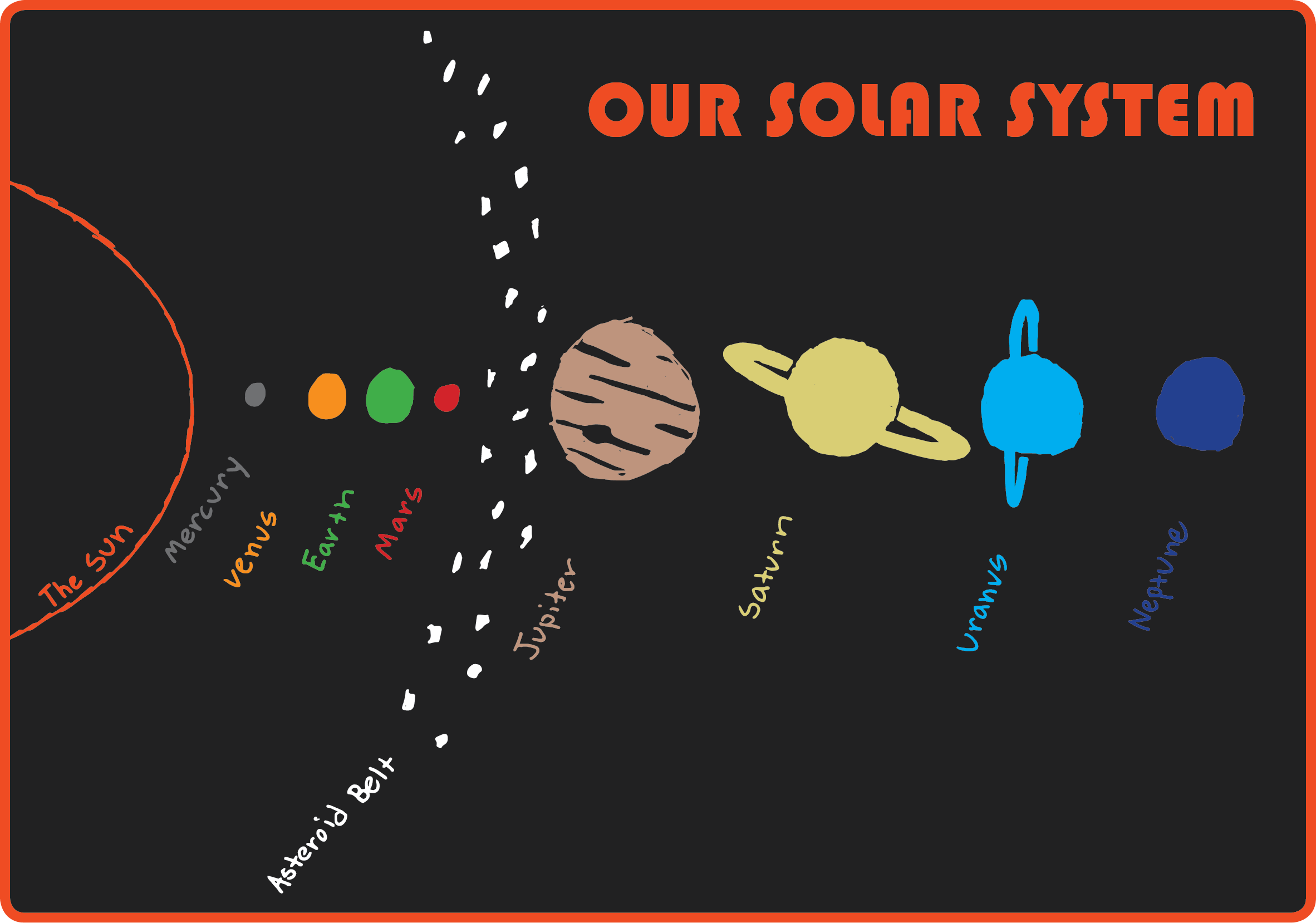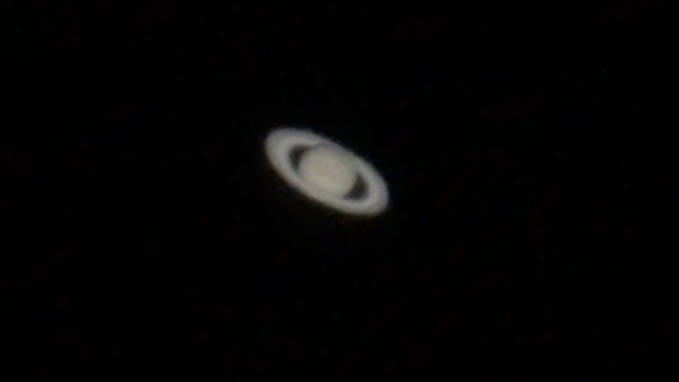Astronomy Blog: Our Solar System


So far, I have focused on how to easily find a few objects in the sky such as the moon and the Orion Nebula. In this post, you will learn more about our very own solar system and the planets within it.
The solar system is a gravitationally bound system made up of the sun and the objects that orbit it. Eight large planets along with their moons orbit the sun, along with smaller objects, such as dwarf planets, asteroids and comets. Our very own Earth is one of the eight main planets in the solar system and is the third planet from the sun. It is the only planet known to harbor life but we soon may find signs of living organisms on the red planet Mars, the fourth planet from the sun. Earth takes 365 days to go around the sun once (we call this a calendar year) while Mercury, the closest planet to the sun, takes just 88 Earth days. Neptune, the furthest from the sun, takes a whopping 165 Earth years.
Scientists estimate that the Solar System formed around 4.6 billion years ago from the gravitational collapse of a giant interstellar molecular cloud. This means that a cloud of gas and dust in space was disturbed, maybe by the explosion of a nearby star, which is called a supernova. This explosion made waves in space which squeezed the cloud of gas and dust causing the cloud to collapse. As gravity pulled the gas and dust together, it formed a solar nebula. Eventually, the cloud grew hotter and denser in the center and planets like Earth formed where only rocky material could resist the great heat and all of the icy matter settled in the outer regions where the planets like Uranus and Neptune formed.

Of all the planets in our solar system, a favorite of mine is the ringed planet Saturn. It is the sixth planet from the sun and is the second largest one. Saturn is 95 times the size of Earth and is made up entirely of gas. But the feature of Saturn that draws everyone’s attention is its rings, nine of them, if you’re counting. These rings are made up of ice particles with small amounts of rock and dust. If you look closely, you may be able to make out a prominent gap between the rings. This area is called the Cassini division and has a very low density of particles which makes it appear as a black gap between the rings. In 2004, after a seven year journey, NASA’s Cassini became the first spacecraft to enter Saturn’s orbit, sending home stunning never-before seen pictures of the ringed planet.
Our entire universe is a world waiting to be discovered and you can join the quest by exploring the sky above you. Astronomy will compel your soul to look upwards and lead you from this world to another, while you still have your feet planted on our planet Earth.
1 Comment

loving this blog! as a physics nerd and a fan of the movie interstellar, i would love to hear your thoughts on gravity and black holes. keep up the good work. I hope to see this blog continue. also please recommend good places around the island to stargaze!!!!